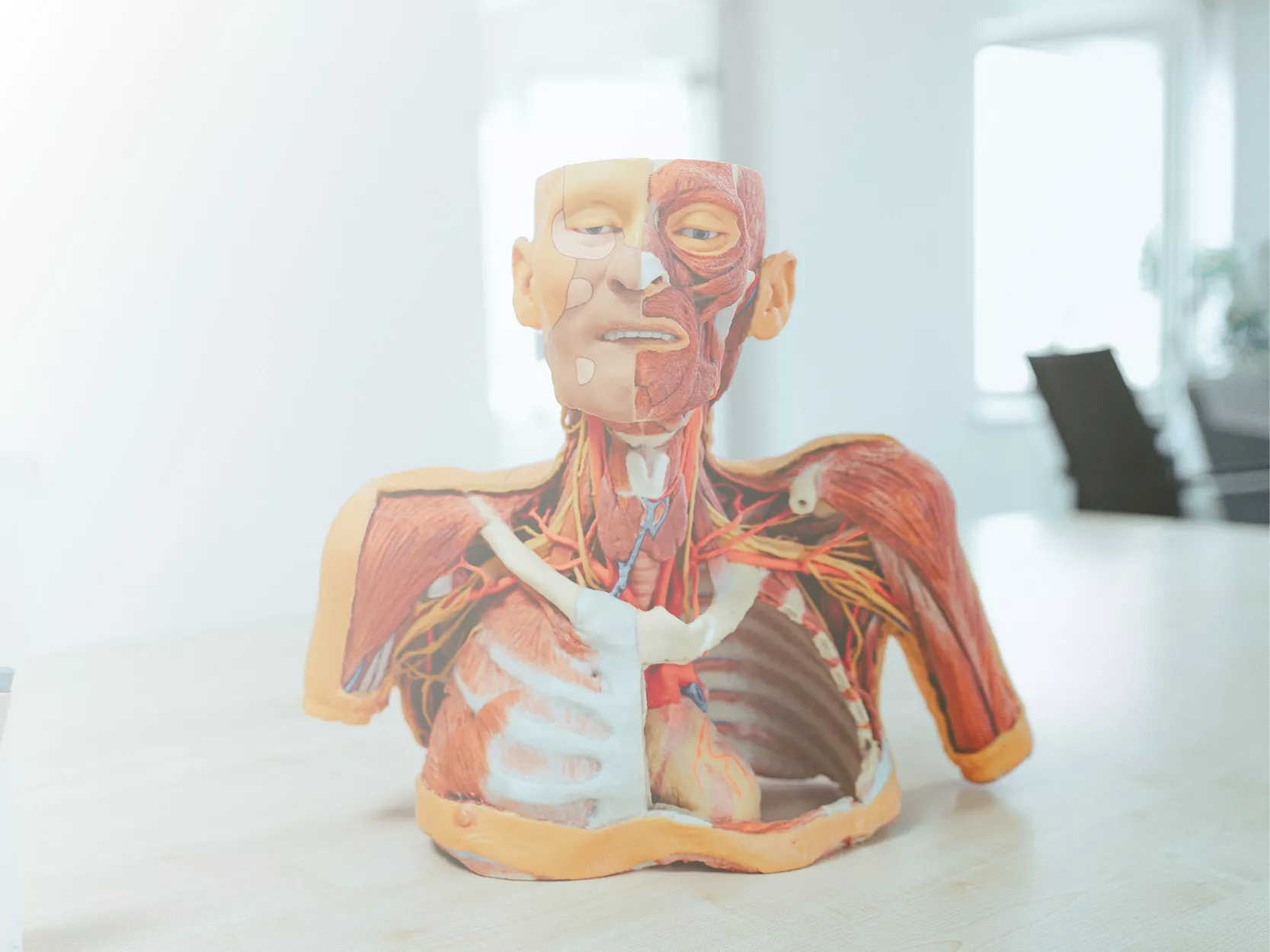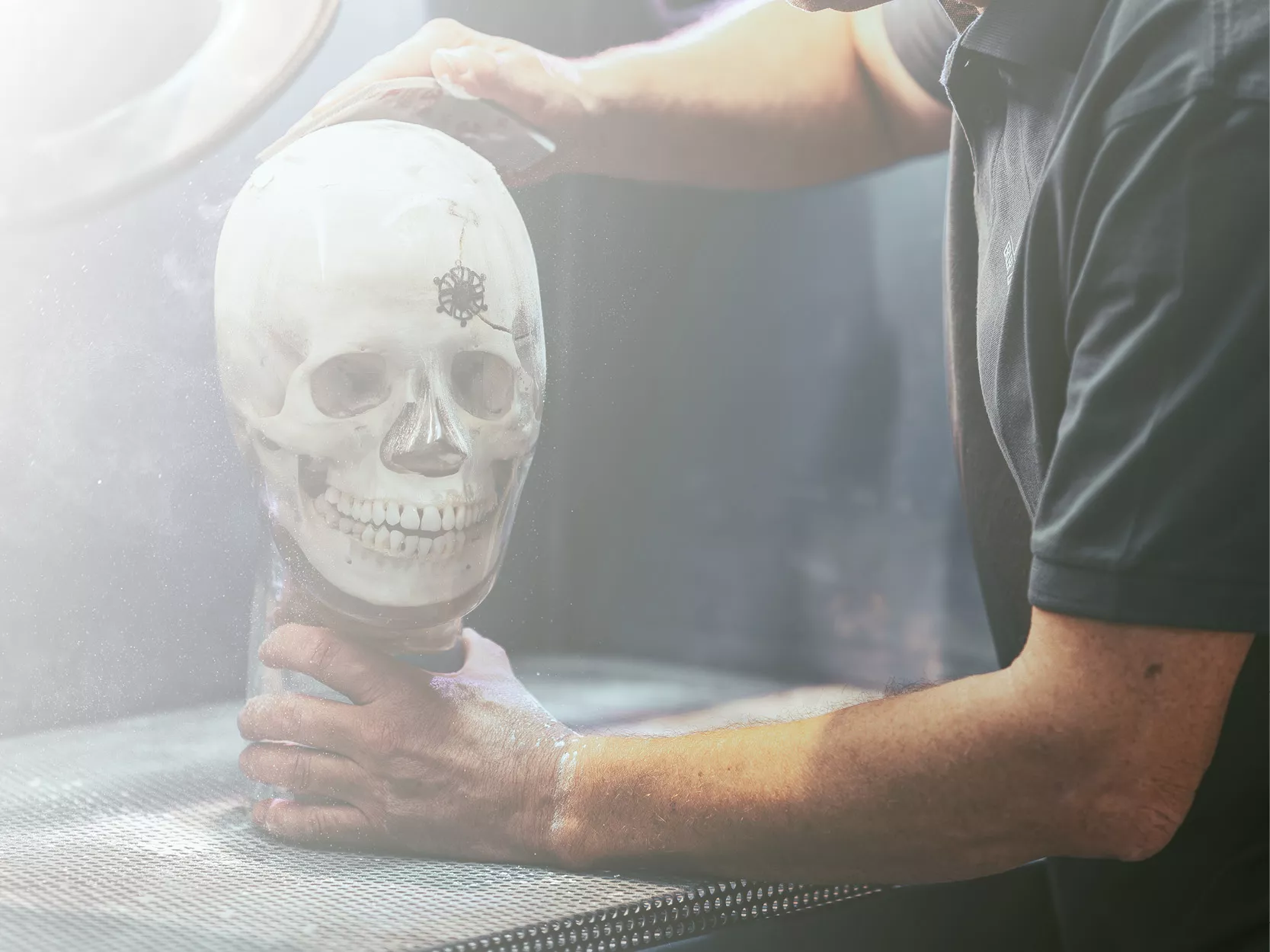Produktinformationen "Intracranial space-occupying lesion"
Klinische Vorgeschichte
Eine 56-jährige Frau wurde nach einer Grand-Mal-Epilepsie bewusstlos ins Krankenhaus eingeliefert. Sie hatte zuvor über einen Zeitraum von sechs Monaten an wiederkehrenden Kopfschmerzen und Erbrechen gelitten. Das Bewusstsein erlangte sie nicht mehr zurück.
Pathologie
In der koronaren Schnittfläche des Gehirns zeigt sich eine seitliche und nach unten gerichtete Verdrängung durch eine große, vermutlich rechtsseitige meningeale Raumforderung. Die eigentliche Raumforderung (wahrscheinlich ein Meningeom) ist nicht erhalten. An der Vorderseite zeigt sich eine Mittellinienverlagerung mit subfalkiner Herniation des Gyrus cinguli. Auf der Rückseite finden sich Blutungen unterschiedlicher Altersstufen im Temporallappen und Brückenbereich (Pons), typisch für supratentorielle Raumforderungen. Zusätzlich ist eine Ventrikelasymmetrie sichtbar.
Weitere Informationen
Ein Meningeom mit raumfordernder Wirkung kann Druck auf das Hirngewebe ausüben, was zu Atrophie und Verlagerung führt und die Funktion von Hirnnerven, die Blutzirkulation und die normalen Gehirnfunktionen beeinträchtigen kann. Häufige Symptome sind:
- Krampfanfälle – z.?B. myoklonisch (Muskelzuckungen oder Spasmen) oder tonisch-klonisch (Bewusstlosigkeit, Muskelsteifigkeit, gefolgt von Zuckungen, Kontrollverlust über Körperfunktionen).
- Sinnesstörungen – Veränderungen des Seh-, Geruchs- oder Hörsinns ohne Bewusstseinsverlust.
Die Symptomatik hängt stark von der Lokalisation des Tumors ab.
Eine 56-jährige Frau wurde nach einer Grand-Mal-Epilepsie bewusstlos ins Krankenhaus eingeliefert. Sie hatte zuvor über einen Zeitraum von sechs Monaten an wiederkehrenden Kopfschmerzen und Erbrechen gelitten. Das Bewusstsein erlangte sie nicht mehr zurück.
Pathologie
In der koronaren Schnittfläche des Gehirns zeigt sich eine seitliche und nach unten gerichtete Verdrängung durch eine große, vermutlich rechtsseitige meningeale Raumforderung. Die eigentliche Raumforderung (wahrscheinlich ein Meningeom) ist nicht erhalten. An der Vorderseite zeigt sich eine Mittellinienverlagerung mit subfalkiner Herniation des Gyrus cinguli. Auf der Rückseite finden sich Blutungen unterschiedlicher Altersstufen im Temporallappen und Brückenbereich (Pons), typisch für supratentorielle Raumforderungen. Zusätzlich ist eine Ventrikelasymmetrie sichtbar.
Weitere Informationen
Ein Meningeom mit raumfordernder Wirkung kann Druck auf das Hirngewebe ausüben, was zu Atrophie und Verlagerung führt und die Funktion von Hirnnerven, die Blutzirkulation und die normalen Gehirnfunktionen beeinträchtigen kann. Häufige Symptome sind:
- Krampfanfälle – z.?B. myoklonisch (Muskelzuckungen oder Spasmen) oder tonisch-klonisch (Bewusstlosigkeit, Muskelsteifigkeit, gefolgt von Zuckungen, Kontrollverlust über Körperfunktionen).
- Sinnesstörungen – Veränderungen des Seh-, Geruchs- oder Hörsinns ohne Bewusstseinsverlust.
Die Symptomatik hängt stark von der Lokalisation des Tumors ab.
Erler-Zimmer
Erler-Zimmer GmbH & Co.KG
Hauptstrasse 27
77886 Lauf
Germany
info@erler-zimmer.de
Achtung! Medizinisches Ausbildungsmaterial, kein Spielzeug. Nicht geeignet für Personen unter 14 Jahren.
Attention! Medical training material, not a toy. Not suitable for persons under 14 years of age.






































